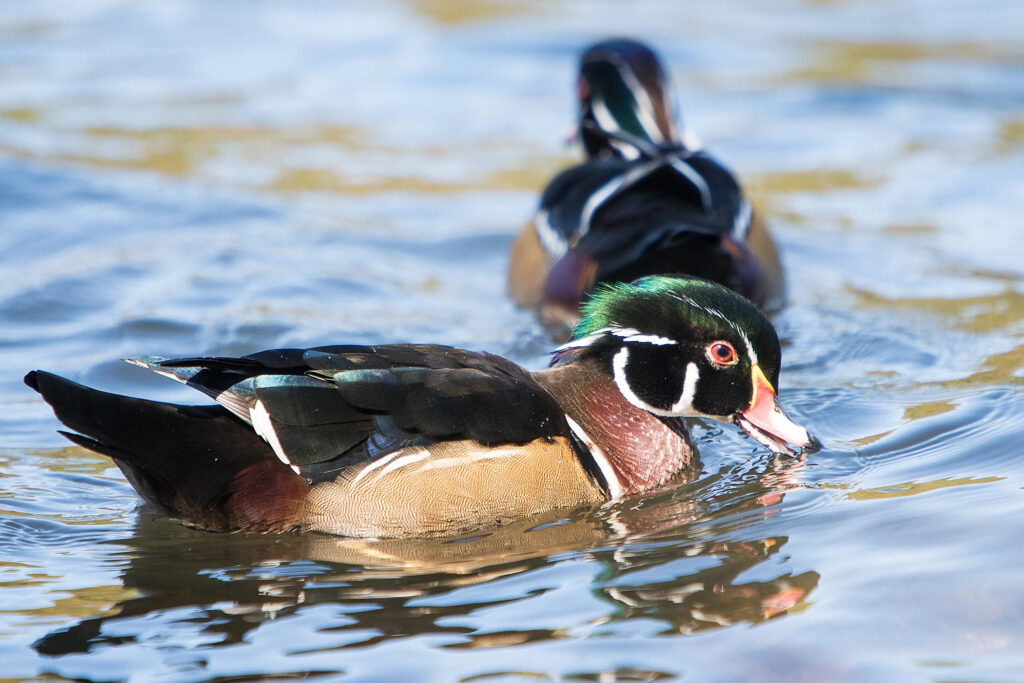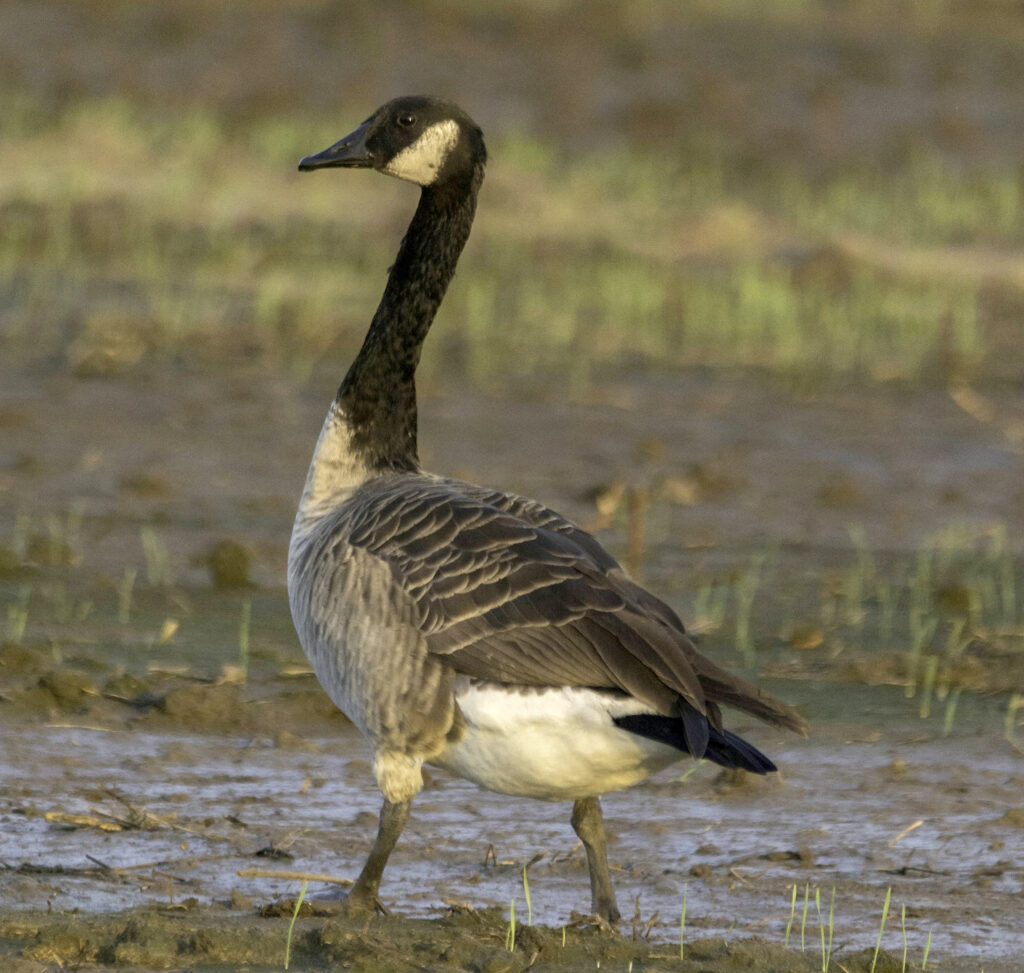
Although overall duck numbers are up in the latest Waterfowl Breeding Population and Habitat Survey, those waterfowlers who hunt the special teal season better plan to take full advantage of this year’s early season of 16 days, set for Sept. 14-29.
Seth Maddox of the Alabama Department of Conservation and Natural Resources’ (ADCNR) Wildlife and Freshwater Fisheries (WFF) Division said this year’s survey indicated a downturn in blue-winged teal numbers, and the 2025 special teal season will be trimmed to nine days.
“The one that kind of hurts is that blue-winged teal are down by 12%,” said Maddox, WFF’s assistant chief of the Wildlife Section, who serves on the Mississippi Flyway Council. “What that does is it kicks us into a different framework and a lower number of days for teal season in 2025. We set the frameworks for seasons and bag limits a year in advance. So that means in September of 2025 we’ll have a nine-day teal season because those teal numbers are down.”
Maddox said setting the early teal season is a tricky situation because the migration greatly depends on weather. The daily bag limit during the early teal season is six birds per person. Hunting hours are one-half hour before sunrise to sunset.
“When you only have a handful of days to do it, you don’t really know when the migration is going to come through,” he said. “We try to set the early season to have the best chance of success. In a 16-day season, you might have a good three or four days of hunting during a period of high migration, but, when you crunch that period down to nine days, you struggle to know where to put those in the season to take advantage of the conditions. Is there a weather front that is going to push the birds down? When we start getting that first cool air, they’re a small duck so they’re getting out of the prairie. With any type of weather change, they are getting on the move and end up in South America. If we don’t get something to move the ducks, we may miss the migration. In addition, we are setting these state seasons six months in advance of the opener.”
Another factor that influences waterfowl migration is the available water on the landscape, and Alabama needs significant rain to expand the waterfowl habitat.
“It’s been so dry that there’s no sheet water on the landscape,” Maddox said. “The ducks will be concentrated on the rivers and reservoirs and backwaters if we don’t get any rainfall real soon. And it’s going to have to be a significant rain because all the ag fields are so dry they’re just going to soak any rain right up.”
The U.S. Fish and Wildlife Service and Canadian Wildlife Service conduct aerial breeding surveys in May and June of each year to estimate the number of breeding ducks and the condition of the principal breeding habitat in North America. The survey includes 19 North American ducks, Canada geese, coots and swans.
“The survey is up 5% in total ducks from last year,” Maddox said. “The number of ponds on the landscape was up 4%, which is a good turnaround. If you look at the different species, it’s kind of up and down.”

Waterfowl hunters in the middle of Alabama primarily focus on hunting wood ducks. / Photo by Billy Pope
Mallards are considered the benchmark species when it comes to population numbers, and mallards were up 8% from last year but are still down 16% from the long-term average.
“Those mallard numbers bounce back and forth, but it’s pretty stable across the board,” Maddox said. “The big thing is the American wigeon was up 55%. Nobody knows what to attribute it to. They’re up over the long-term average by 12%.
“Another species that impacts hunters in Alabama is green-winged teal, which are up 20% from last year and up 38% over the long-term average, so that’s looking good for that species. But we don’t see many of them, if any at all, during the early teal season. They migrate later in the year.
“Gadwall numbers are down a little bit, but up 11% over the long-term average, so there’s no worry there. Scaup numbers are up but not enough to push us out of the one-bird daily bag limit. All the other species look fine.”
Maddox said the bag limits for the 2024-2025 seasons are unchanged with a six-duck daily bag limit, which may include no more than four mallards (no more than two of which can be female), three wood ducks, one mottled duck, two black ducks, two redheads, one pintail, two canvasbacks and one scaup. The coot limit is 15 per day. The merganser limit is five per day, only two of which can be hooded mergansers.
Duck season is split into two segments, the first being Nov. 29, 2024, through Dec.1, 2024, and the second Dec. 6, 2024, through Jan. 31, 2025.
Hunters can also take advantage of an early goose season that starts on Sept. 7, 2024, and runs through Oct. 6, 2024. The other goose season segments are Oct.19, 2024, through Nov. 2, 2024, Nov. 29, 2024, through Dec. 1, 2024, and Dec. 6, 2024, through Jan. 31, 2025. The aggregate bag limit for dark geese (Canada, white-fronted and Brant) is five per day. The aggregate bag limit for light geese (snow, blue, Ross’s) is also five per day.
Because the waterfowl survey occurs early in the year, Maddox said that not all the migrating ducks are counted.
“When they’re doing the counts in May in Canada and the U.S., they’re looking at breeding pairs, and they don’t account for the number of juveniles that will be on the landscape,” he said. “The fall flight is predicated on the number of surviving adults that make it to the next season plus the number of offspring that were hatched this summer. A lot of birds we harvest up and down the flyway are juvenile birds, which is in excess of the population.
“I imagine that our fall flight will look pretty good, although we definitely need some water in the South.”
Maddox said the number of waterfowl hunters continues to climb in Alabama.
“Based on stamp sales, we set another record with 38,852 state stamps sold in 2023,” he said. “We’ve set records each year for the past five years. We’ve got duck hunters all across the state, whether they’re hunting wood ducks in central Alabama or hunting big ducks in the north or in the south.”
Although not regulated under the waterfowl framework, a sandhill crane hunting opportunity is available in Alabama through a limited quota system. Season dates are Nov. 29, 2024, through Jan. 5, 2025, and Jan. 13-26, 2025.
Applications for sandhill crane permits will be accepted only at www.outdooralabama.com, the Alabama Department of Conservation and Natural Resources’ website. Registration opened Sept. 4, 2024, and closes Sept. 25, 2024, at noon. Drawn hunters have until Oct. 2, 2024, to pass the ID and Regulations Test, purchase the selected Sandhill Crane Harvest Permit and accept their hunting status. If not completed by the deadline, an alternate will be promoted into that hunter slot. Visit www.outdooralabama.com/what-hunt/sandhill-crane-hunting-alabama for details.
During the 2023-2024 sandhill crane season, 451 hunters harvested 322 sandhill cranes.

Hunters can take advantage of the early goose season to reduce the number of resident Canada geese. / USFWS photo




























